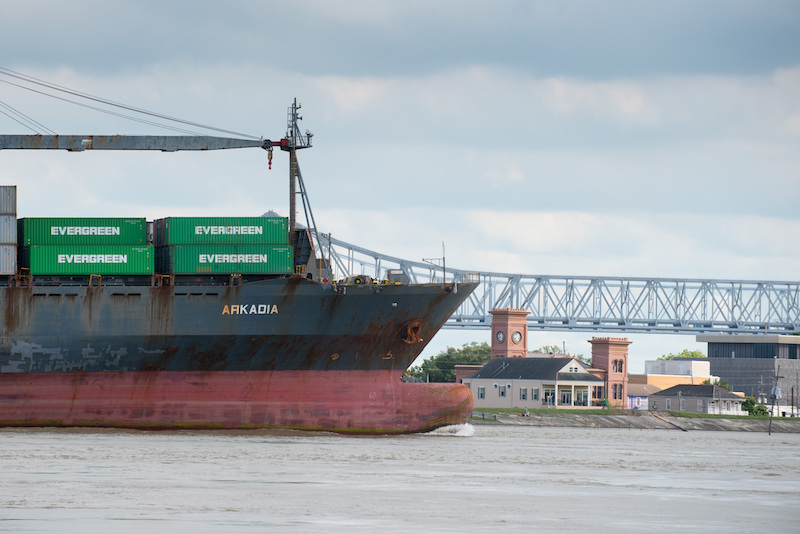The Corps of Engineers New Orleans District launched the first phase of its Lower Mississippi River ship channel deepening project on Sept. 11. The project will deepen the ship channel from 45 feet to 50 feet.
The launch of the project follows the July 31 signing of an agreement between the Corps and the state of Louisiana. The final 256 miles of the Lower Mississippi between the Gulf of Mexico and Baton Rouge, La., will be deepened to 50 feet. This stretch is where river transportation ships more than 50% of the U.S. corn and soybeans to the U.S. export markets, according to the U.S. Department of Agriculture. The project will provide deep draft access to Louisiana ports at Baton Rouge, New Orleans, South Louisiana, St. Bernard and Plaquemines.
In addition, the material dredged from the first 30 miles of the project near the mouth of the Mississippi River will restore an estimated 1,462 acres of critical marsh habitat. Phase 1 of the project will provide a 50-foot channel from the Gulf of Mexico through Southwest Pass to Belmont Crossing and open up approximately 175 miles of the ship channel to the deeper draft, encompassing the entire jurisdiction of the Port of New Orleans. The second phase of the project will focus deepen specific locations between New Orleans and Baton Rouge where the river current slows and deposits sediments. The Corps estimates it will finish the entire project by 2024.
“This is a great day for the people of Louisiana who depend on the Mississippi River for their livelihood,” Gov. John Bel Edwards said at the signing in July. “When completed, this project will allow larger vessels that can currently use the widened Panama Canal to reach Louisiana ports as far north as Baton Rouge. It will also allow for some vessels to carry heavier loads. Nationwide, industries that depend on this Mississippi River to move goods will benefit greatly from this dredging project.”
"The Mississippi River has always been a critical economic engine for the United States and connects our Nation’s heartland to the global economy,” said Major General Diana Holland, Corps of Engineers - Mississippi Valley Division commander. "More capacity means greater efficiency in transportation and less costs for our Nation’s producers. From a benefit cost perspective, that equates to a benefit $7.20 for every dollar spent on operation and maintenance, a significant return on investment."
Funding for the approximately $250 million project has been allocated through a variety of sources. As the non-federal sponsor, the Louisiana Department of Transportation and Development (LADOTD) has committed $81 million.





